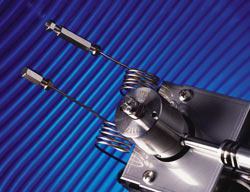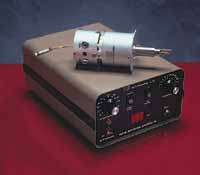
- Non-radioactive, non-destructive, highly sensitive, and universal
- Linear response over a wide range
- Minimum detectable quantities for most compounds in the low ppb range
The pulsed discharge detector (PDD) utilizes a stable, low-powered, pulsed DC discharge in helium as the ionization source. Performance is equal to or better than GC detectors with conventional radioactive sources. In the helium photoionization mode, the PDD is a universal, non-destructive, high sensitivity detector. In the electron capture mode, the PDD is a selective detector for monitoring high electron affinity compounds such as freons, chlorinated pesticides, and other halogen compounds. (Read more)
Model D-2 — Stand-alone system

The D-2 is a dual mode, universal detector system which can be retrofitted to your older GC. The D-2-I is a helium photoionization detector, optimized for trace level work with packed columns.
Plug-and-play detectors for Agilent GCs
Model D-3 is optimized for trace level work in the helium photoionization mode, with plug-and-play capability for the 6890, 7890, and 8890.

Plug-and-play detectors for other GCs
Model D-4 is available in version for easy installation on most of the GCs in current use. It is optimized for helium photoionization.
miniPDD
The miniPDD uses about one fifth (20%) the amount of helium as the D-3 and D-4 versions, giving up only a bit of sensitivity and dynamic range in return.

